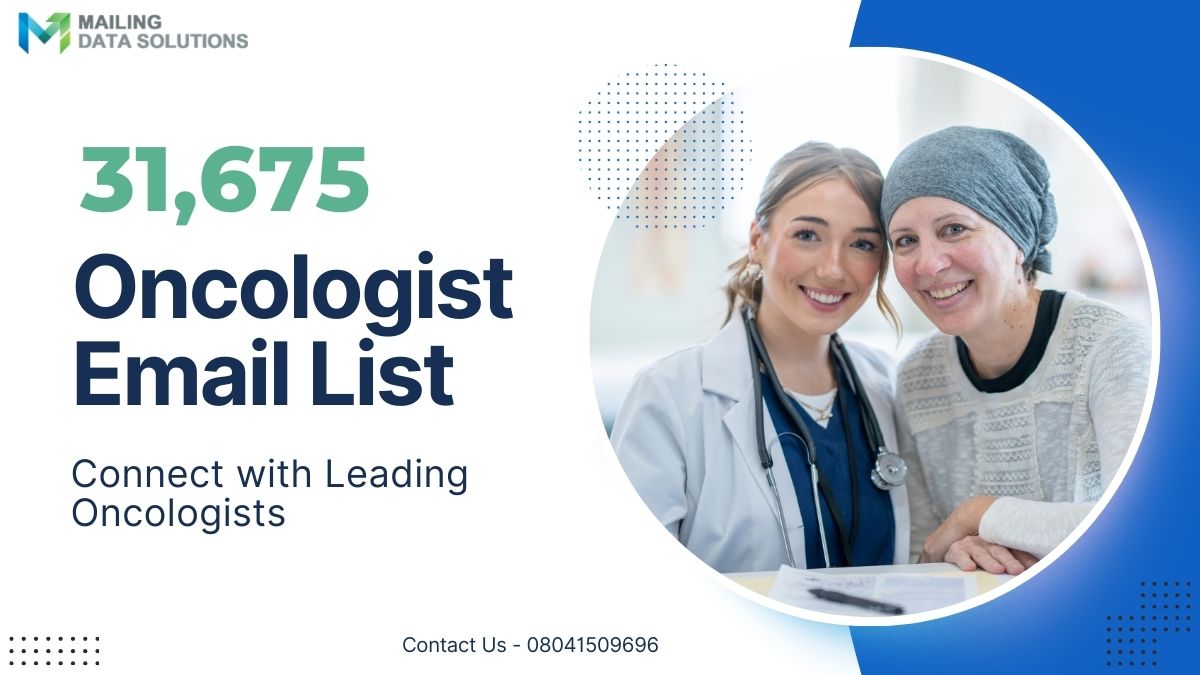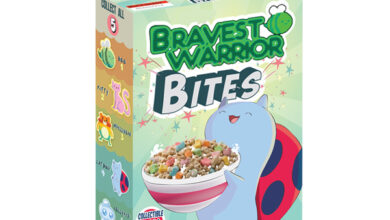Introduction
As we edge closer to 2024, businesses are keenly observing the evolving landscape of healthcare marketing, especially within specialized fields such as oncology. With an oncologist email list being a crucial asset for B2B healthcare marketers, understanding and anticipating the trends that will shape its effectiveness is paramount. This blog post delves into the anticipated business trends for 2024 that are expected to redefine the use and efficiency of oncologist email lists. By staying ahead of these trends, businesses can not only ensure their marketing strategies are compliant and effective but also leverage the power of technology and content to forge stronger connections with oncology professionals.
The Growing Importance of Personalization in Oncologist Email Lists
In the rapidly evolving landscape of healthcare marketing, the push towards personalization within oncologist email lists is becoming increasingly significant. By 2024, the expectation for personalization will transcend basic strategies, such as using an oncologist’s name, to include the crafting of messages that deeply resonate with their unique professional interests, areas of specialty, and the specific hurdles they encounter in their day-to-day practice. This level of hyper-personalization necessitates a robust understanding and application of data analytics and segmentation techniques. Marketers will be compelled to harness the capabilities of advanced CRM solutions that can dissect an oncologist email list into highly detailed segments. This will ensure that the material being sent is not only relevant but also compelling and engaging for each recipient. To achieve this, an investment in technology that can analyze behavioral data, practice patterns, and even content engagement will be crucial. Such tools will allow marketers to personalize content at scale, ensuring every communication is carefully aligned with the recipient’s current interests and needs. This tailored approach promises to significantly enhance the impact of email marketing campaigns, fostering stronger, more meaningful connections between healthcare businesses and oncology professionals.
Compliance and Privacy: Navigating the Legal Landscape
In the ever-tightening realm of data privacy and regulatory adherence, the importance of navigating the legal landscape with precision for those utilizing an oncologist email list cannot be overstated. The upcoming year, 2024, will demand an even more diligent approach to ensuring that all email marketing practices fall within the bounds of stringent regulations such as the General Data Protection Regulation (GDPR) in Europe, the Health Insurance Portability and Accountability Act (HIPAA) in the United States, and other emerging global data protection laws. This landscape necessitates a proactive stance, with businesses investing in sophisticated compliance tools and seeking expert legal counsel to preemptively address potential legal challenges. These steps are vital not just for avoiding legal repercussions but also for cementing trust among oncologists, who are increasingly conscious of their data privacy. As regulations evolve and become more complex, the ability to agilely adapt email marketing strategies in compliance with these laws will be crucial. Marketers will need to ensure that their outreach efforts are not only effective but also unequivocally respectful of privacy and consent norms. This focus on compliance and privacy underscores a broader commitment to ethical marketing practices, which will play a central role in maintaining and strengthening relationships with healthcare professionals in the oncology field.
The Integration of AI and Machine Learning
AI and ML are at the forefront of transforming data analysis and trend prediction methodologies, especially when applied to the nuanced fields of healthcare marketing such as those involving oncologist email lists. These cutting-edge technologies enable an unprecedented level of insight into oncologists’ behaviors and preferences regarding email communications. By employing algorithms capable of learning from data patterns, marketers can optimize the timing and content of their emails, ensuring that each message is not just seen but is also relevant and engaging. Predictive analytics, a feature of AI and ML, allows for the anticipation of future content preferences and the identification of emerging topics within the oncology sphere that may interest recipients. This dynamic approach to email marketing not only elevates the effectiveness of campaigns but also ensures that the content is deeply aligned with the current and future needs of oncologists. The strategic application of AI and ML in analyzing an oncologist email list goes beyond just operational efficiency; it enables a deeper, data-driven understanding of the target audience. This, in turn, facilitates the creation of more personalized, timely, and impactful email marketing initiatives, marking a significant shift towards more technologically sophisticated and insightful marketing strategies in the healthcare sector.
Embracing Omnichannel Strategies for Greater Impact
In today’s digital age, leveraging an oncologist email list within a multifaceted marketing framework is becoming essential. The push towards omnichannel strategies underscores the necessity of engaging oncologists across various platforms, from direct email campaigns to interactive webinars and dynamic social media interactions. This approach ensures that oncologists experience a unified and consistent message, irrespective of the digital medium. Looking forward to 2024, the integration of these diverse channels will require a strategic and nuanced understanding of each platform’s unique advantages. Marketers will need to craft content that is not only platform-specific but also resonates with the specific interests and professional challenges faced by oncologists. This might include using social media for more immediate, engaging content while reserving email for in-depth articles or announcements of upcoming webinars. The seamless flow of information across these channels will facilitate a more comprehensive engagement strategy, enabling healthcare businesses to reach oncologists with the right message at the right time and through the right channel. Additionally, the integration of analytics tools across these platforms will provide invaluable insights into how oncologists interact with different types of content, further refining and optimizing the outreach strategy. As we advance, the ability to coordinate these multiple channels effectively will distinguish the most successful marketing efforts, driving both reach and relevance in the rapidly evolving healthcare landscape.
The Shift Towards Value-Based Content
The move towards providing substantial, value-added content within communications to oncologists is becoming a cornerstone of successful email marketing strategies. As we approach 2024, it is imperative for content creators to deeply understand the challenges, needs, and interests of oncologists. This understanding must translate into the development of content that transcends traditional promotional materials, offering instead rich insights, groundbreaking research findings, and practical guidance that can directly enhance patient care and treatment methodologies. The aim is to craft communications that are not just informative but are indispensable resources for oncologists, encouraging deeper engagement and fostering a perception of the sender as a key partner in their professional journey. This trend towards value-based content emphasizes the need for meticulous research, creative thought, and a commitment to excellence in every piece of content shared through oncologist email lists. By prioritizing content that genuinely contributes to the betterment of oncology practice, companies position themselves as allies in the advancement of healthcare, thus building lasting relationships with oncology professionals. Engaging in this level of thoughtful content creation requires a dedicated effort to stay abreast of the latest developments in oncology, ensuring that every email adds real, tangible value to the recipient’s day-to-day professional life. This strategic approach to content is poised to become a differentiating factor for businesses seeking to make a meaningful impact within the oncology community.
The Role of Feedback Loops in Refining Strategies
The utility of feedback loops in fine-tuning email marketing approaches, especially with an oncologist mailing list, is becoming increasingly crucial. As the healthcare landscape evolves, so do the preferences and needs of oncologists. Incorporating sophisticated feedback mechanisms is a trend set to become more prevalent by 2024. These systems offer marketers real-time analytics and insights, shedding light on the performance of each email campaign. By analyzing open rates, click-through rates, and direct responses from recipients, marketers gain a clearer understanding of what resonates with their audience. This data-driven approach facilitates the swift adaptation of content and messaging, ensuring they remain relevant and engaging. Furthermore, soliciting direct feedback from oncologists through surveys or interactive elements within emails can provide qualitative insights into their evolving needs. This iterative process of reviewing, analyzing, and adjusting based on feedback is essential for maintaining the efficacy of email marketing strategies. It underscores a dynamic, responsive approach to engaging oncology professionals, ensuring that each communication is not just seen, but is meaningful and valued by its recipients. Embracing this responsive strategy will be key for businesses aiming to stay connected with their audience in a landscape marked by rapid change and increasing expectations for personalized, impactful communications.






